CONTENT
SANRIKU INTERNATIONAL ARTS FESTIVAL MODEL TOUR REPORT
- 2022
- suggested-route
- Interact
- Experience
- Appreciation
Trip to Otsuchi: Meeting the Town of Folk Performing Arts 3 days and 2 nights
Oct. 14 – 16 (Fri – Sun)
Route: From Tokyo to Morioka to Otsuchi to Morioka to Tokyo
Otsuchi Town of Iwate Prefecture has recently become known as a town of farm-raised salmon, but it can be best described as a Town of Folk Performing Arts, for it has a variety of traditional folk performing arts including Kagura, Daikagura, Shishiodori (Deer Dance) and Toramai (Tiger Dance). Currently there are approximately twenty groups actively pursuing their art forms in Otsuchi. After I heard that there would be local food and folk performing arts events taking place in Otsuchi this October (in 2022), I decided to visit there with Mr. Ga Takeshi, a student from China currently studying in Japan.
Itinerary of the Model Tour
| Itinerary | Remarks | |
|---|---|---|
| 12:20 | Depart Tokyo Station for Morioka Station(11:23) | Tohoku Shinkansen |
| 15:05 | Depart Morioka Station for Otsuchi Station | Iwate-ken Kotsu Bus bound for Otsuch |
| Itinerary | Remarks | |
|---|---|---|
| Otsuchi Charikue – 4 hours | on electric bicycle | |
| From Otsuchi Station to Bench with Wave-Shaped Roof, Otsuchi Magohachiro Shoten, Horai Island, Gensui River (spring water), Chari Café, Hermano, and Obachan Club’s Deko-Sake Experience | ||
| ● Visiting Otsuchi Local Folk Performing Arts Groups – 1 hour | ||
| ● Otsuchi Shrines and Temples Tour – 2 hours |
| Itinerary | Remarks | |
|---|---|---|
| 09:00 | Otsuchi Sangyo Matsuri at Umizukuri Memorial Park | |
| 15:21 | Depart Otsuchi Station for Kamaishi Station | Sanriku Railway or rental car |
| 15:57 | Depart Kamaishi Station for Shinhanamaki Station | JR Kamaishi Line |
| 18:07 | Depart Shinhanamaki Station for Tokyo Station | Tohoku Shinkansen |
| 18:16 | *Depart Morioka Station for Tokyo Station | *if renting a car. Tohoku Shinkansen |
Day 1: Friday, October 14
Day 2: Saturday, October 15
As You Like It! Customized Bicycle Tours
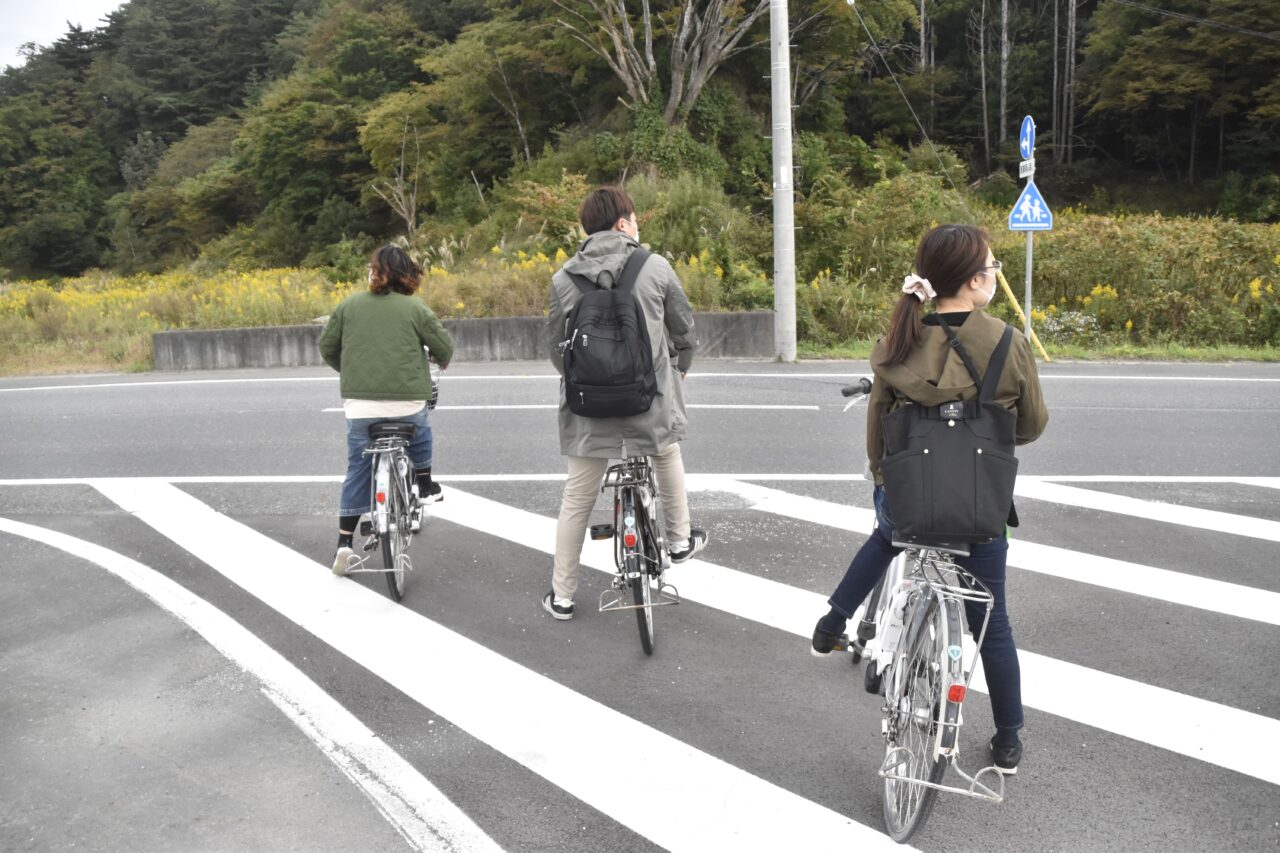
Otsuchi is located near the center of the Sanriku coastal area, an hour and forty minute drive away from Morioka. Because we wanted to visit and enjoy as many places as possible, we hit the Otsuchi Charikue Bicycle Quest first thing in the morning. This is a tour program where you rent an electric bicycle to visit scenic spots and local shops among many other spots in Otsuchi, and collect stamps at each spot. Inaugurated in April 2022, this program quickly became popular and regularly attracts many tourists (please note that reservations are required to participate). This is no ordinary tour on a rental bike. If you show your photos from a minimum of four spots to the organizer, you receive a gift. You can also try your hand at creating some local arts and crafts. You will be rewarded with gifts if you visit certain designated spots, and you receive discount coupons for food and drinks. Through these activities, there are many opportunities to mingle with locals naturally. What’s great about this tour is that you are on your own on bike and can enjoy all of these activities at your own pace.
After we obtained the official tour map, we looked for the spots of interest. We may have been novice riders, but we were determined to enjoy Otsuchi to the fullest! We started around 9 am and as we enjoyed the morning sun, we pedaled along the shore to the Otsuchi fishing port. First, we hit the Bench with Wave-Shaped Roof at the new port, which was recently constructed. We saw some people enjoying fishing here and there. It was very relaxing. We made sure to take a few photos, as this was one of the designated photo spots for the gift give-away. About a ten-minute ride from there, we hit a souvenir shop called Otsuchi Magohachiro Shoten, known for local gourmet food in Otsuchi. They carry a variety of foods and many household items. We were told that we would get some goodies here in exchange for one of the coupons. To our delight, we were able to sample one of their recommended delicacies called Nanchatte Smoked Salmon. This salmon, marinated in a smoky special sauce, was so meaty and delicious. We pedaled for five more minutes and spotted Horai-jima Island, located in the middle of Otsuchi Bay. This island was one of the inspirations for a popular TV show called Hyokkori Hyotan-jima which was also inspired by Hyotan-jima Island in the Seto Inland Sea. Seeing it from afar, the island sure resembled the shape of a hyotan gourd. If you looked deep down into the water, you could see the bottom of the bay because the water was so clear. We could appreciate how high the quality of the water is. We also enjoyed watching sea urchins and brightly colored starfish. Then we visited Gensui River (spring water), where Itoyo (golden threadfin bream or three-spined stickleback), an endangered species, inhabits. A local person told us that it is nice to see the white flowers of Baikamo (plum algae) blossoming in summer, and that the best time to visit to see them is the period between July and August.
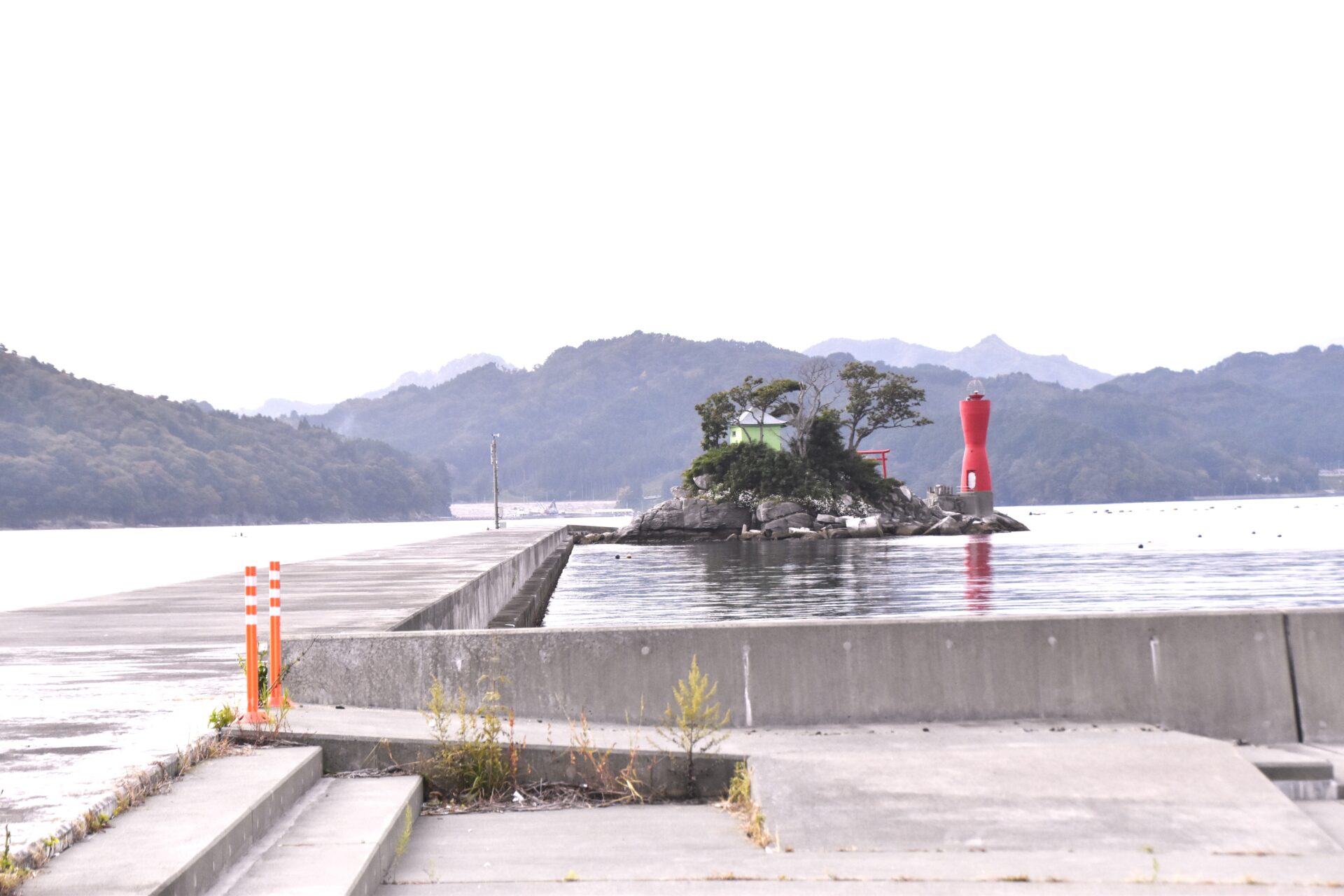
For lunch, we went to Chari-Café, a combination of bike shop and café located in the central area of the town. Many restaurants participate in Charikue where you can use coupons for food and drink. For example, a curry over rice dish that costs 500 yen can be purchased for free with one of the coupons! Some places offer health-conscious menus. It’s so satisfying to have a balanced meal after some good cycling exercise. At the nearby confectionary shop Hermano, we enjoyed baked donuts in exchange for a Charikue coupon. Established in 1949, Hermano used to specialize in traditional Japanese confections and sweets for weddings and other ceremonial occasions. These days, they also offer western sweets including cakes. Though the establishment was completely devastated by the Great East Japan Earthquake, cookies inspired by Horai Island debuted after their reopening, and are some of their new hit items. “But we never give up” is a phrase from the theme song of Hyokkori Hyotan-jima. It is printed on the cookies’ packaging and deeply resonates given the context. At both of these establishments, the employees greeted us with warm smiles.
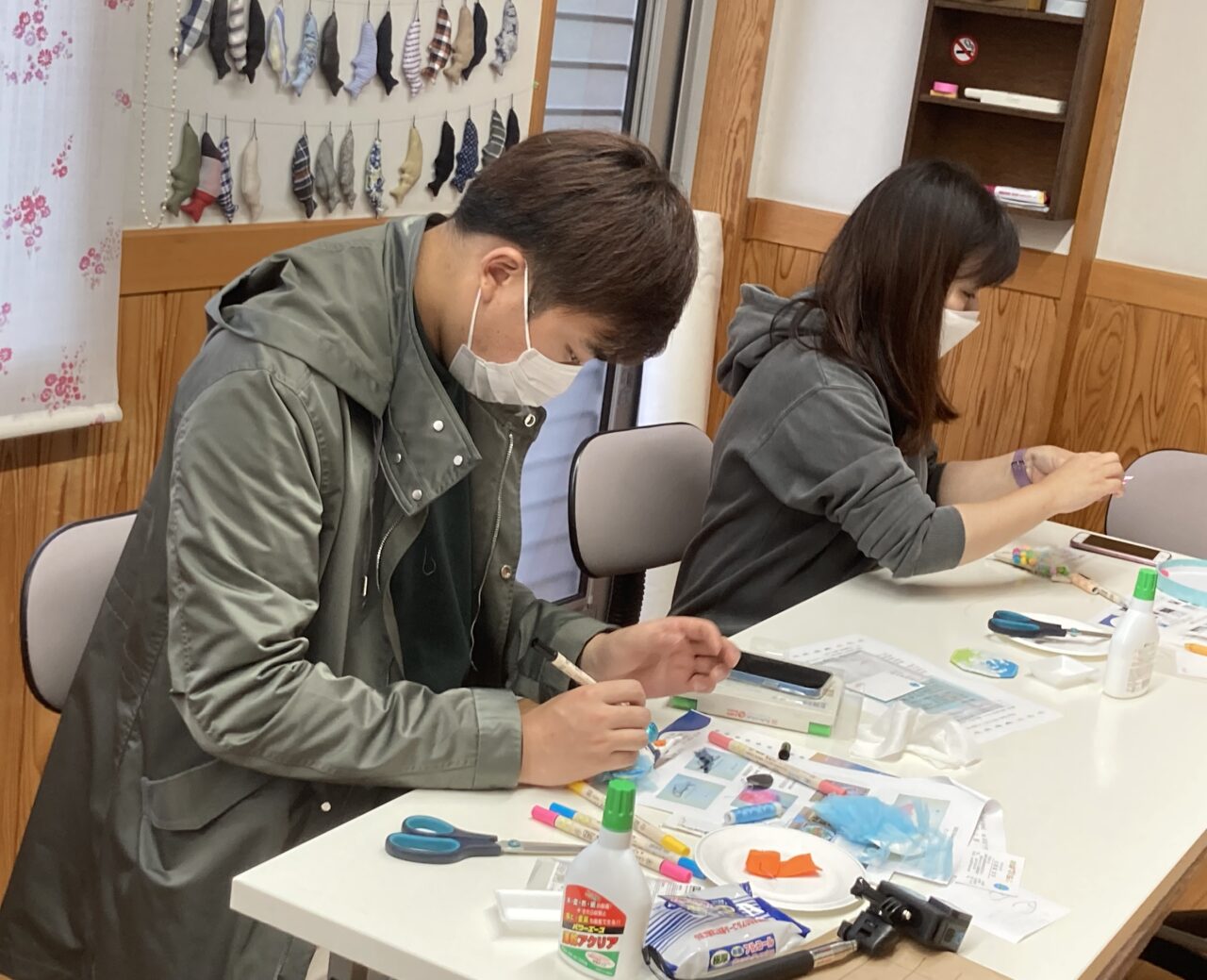
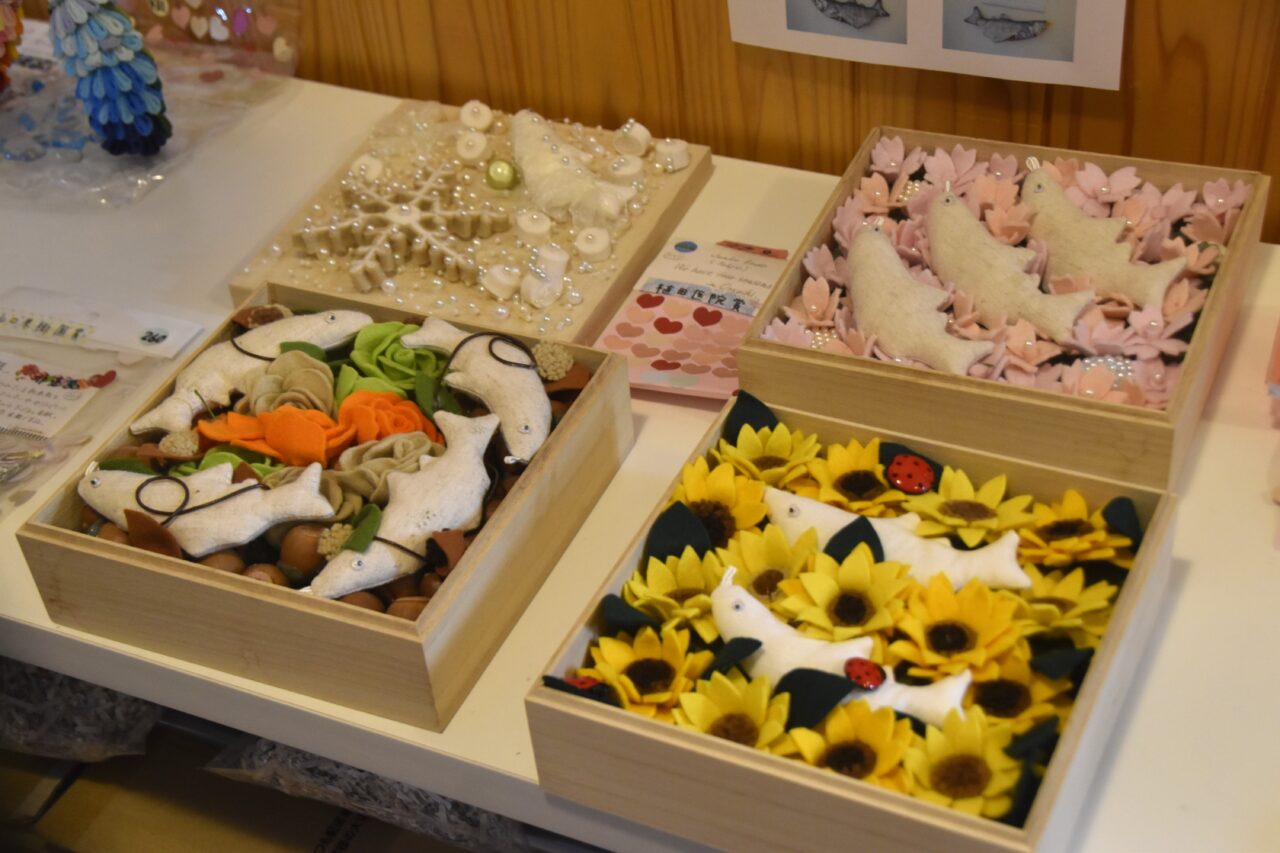
In the afternoon, we participated in some of the activities they offered. These activities vary depending on what time and day you visit. We tried something called the Deco-Sake (decorating salmon dolls) Experience offered by the Obachan Club (Auntie’s Club). Here we decorated plain white salmon dolls sewn by local women who were survivors of the Great East Japan Earthquake from Otsuchi. We used ribbons, buttons and beads to make a uniquely original handmade Deco-Sake of our very own. Many celebrities, including Tomoe Shinohara, Yasuko Mitsuura, and Minami Takayama, have participated in this and their uniquely decorated crafts are displayed there, which we enjoyed seeing. After you finish decorating, you name the price for your creation so they can sell it at fundraisers all over Japan. All of the proceeds (if it sells for more than 200 yen, the cost of the materials) are donated to the Obachan Club for their operational fund. Learning this, I was determined to make it particularly well so that it could be sold for as much as possible. But despite the club members’ assistance, without experience in handicrafts, it was difficult to make it good enough in the limited amount of time. The unique, charmingly decorated Deco-Sake displayed there somehow intimidated me as well. If only there were more time, I could do a better job! But never give up, as they say. It is possible to purchase the undecorated salmon dolls and participate in this charitable activity from anywhere. Someone even sent a finished Deco-Sake from as far as Okinawa. Salmon are known for returning to the rivers where they were born. Using salmon, this charity represents the wish of those living in temporary housing facilities to return home themselves one day.
As you can see, there are a variety of activities to enjoy Charikue in Otsuchi. We successfully completed our mission and received an Iwate original decorative washi tape as a gift. Because the gifts, activities and coupons are not the same on different days, Charikue Bicycle Quest is a great way to enjoy Otsuchi no matter how many times you do it.
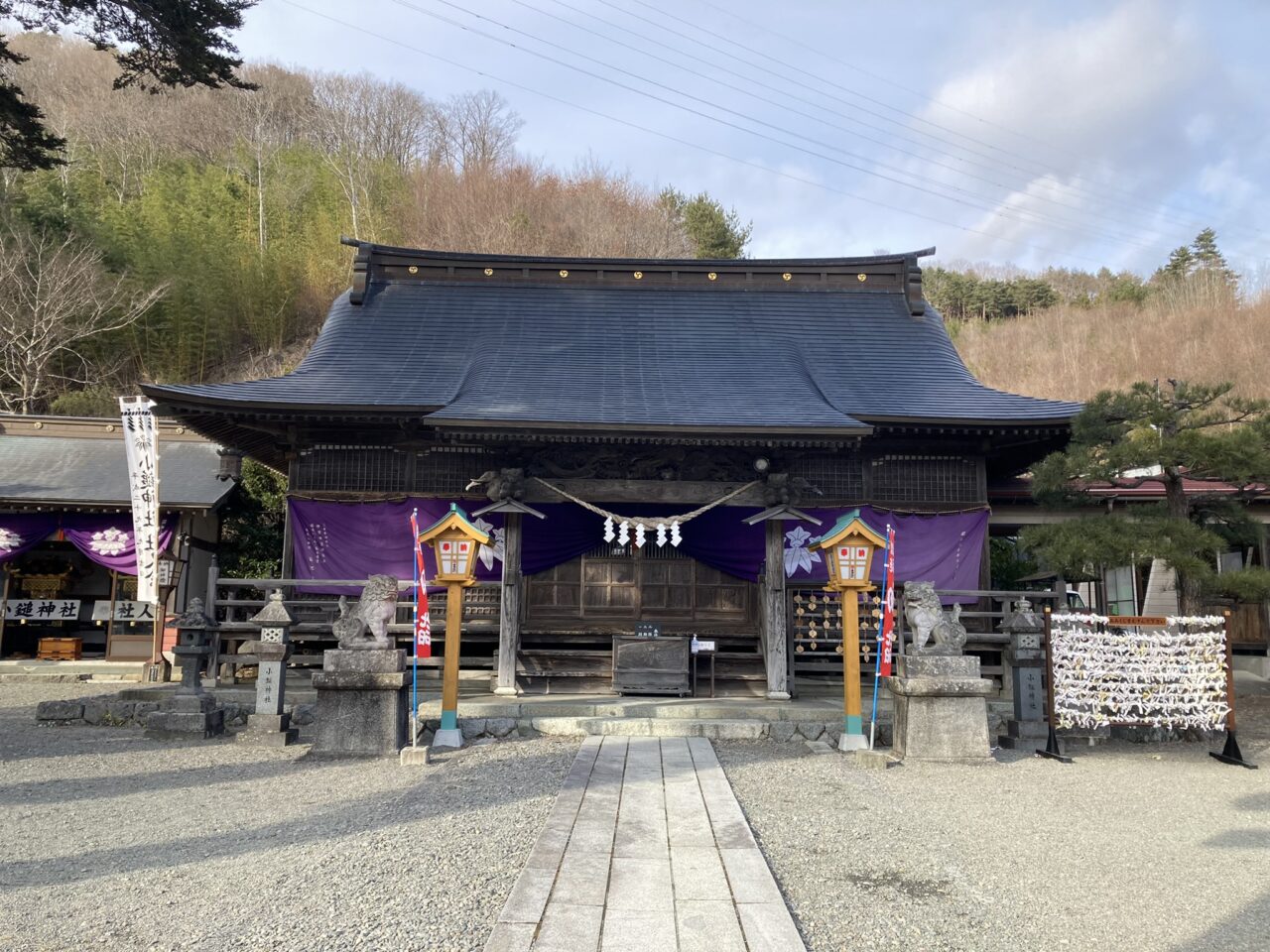
Besides Otsuchi Charikue, we recommend the Shrines and Temples Tour. During the Edo period, Otsuchi flourished as an area called Otsuchi-Dori, which covered from part of Miyako City in the north to Kamaishi City in the south. Because of this history, many treasures remain in this region, including artifacts created by famous Buddhist sculptors and calligraphers. I am sure history enthusiasts would die for them. It’s fun to look around the many historically significant shrines and temples, including the Kozuchi Shrine’s Main Hall. If you would like to learn more about them as you go, guided tours are available with advanced reservations (5,000 yen for a group for approximately two hours). The more you learn, the more you realize how rich the history of this enchanting town is.
Invitation to 400 Years of History: Otsuchi’s Shishiodori (Deer Dance)
Several of Otsuchi’s local folk performing arts organizations offer cultural exchange programs for visitors. (Please inquire about programs in advance.)

We visited the Usuzawa Shishiodori Preservation Society at their main activity base, a building called Denshokan, and met with the former president of the Society, Teruo Tobai. Usuzawa Shishiodori was brought to Otsuchi during the Kan’ei era about 400 years ago. Mr. Tobai was born in 1945 after the Second World War, when many children were born who were willing to carry on the tradition of Shishiodori. He told us that as children, they wanted to get their hands on this dance, and would excitedly emulate the skills of this art form. Around 1975, they started planning to build Denshokan, their wish for a place to gather. They designed and built it entirely on their own, taking more than twenty years to complete the construction. Around 1999, they were finally feeling optimistic about their opening day.
However, around this time, those who wanted to practice this art form became fewer and fewer. Recognizing this, they decided to accept not only local children, but anybody who was willing to learn so that they could have enough people to preserve the tradition. As time went on, their passion for building Denshokan was recognized more and more. They gained the trust of many followers and eventually became a group with more than 120 members. It was encouraging, but there were growing concerns about the stability of the group as its membership was largely from outside the region. That anxiety became reality when the Great East Japan Earthquake hit in 2011. After the Quake, many people stopped coming to Otsuchi. It became impossible for a lot of them, as they all suffered from the Quake in their own regions.
Still hoping to preserve the culture for the future, they gradually resumed activities. They met two dancers from California, who came to Otsuchi after the Quake as volunteers. They became interested in Shishiodori, and decided to stay in Otsuchi, learning not only about the dance, but also the costuming. Their exchange with the locals deepened, and they later returned to Otsuchi as performers in the Sanriku International Arts Festival. One day during the coronavirus pandemic, they contacted the Society from California and requested that they dance for their deceased family members in California. Even though the Society had been unable to dance for quite a while due to the pandemic, they felt compelled to respond to their wish. Consequently, younger members connected with people from California and a few other countries, and performed Shishiodori. That was the moment when Shishiodori brought people together across the ocean. “If you keep living, you experience something beyond your imagination,” Mr. Tobai recalled.
One of the essential materials required for building the Shishiodori costume is a plant called Doronoki (Japanese poplar). Because less and less are cultivated these days, some Shishiodori organizations use a substitution material, but Mr. Tobai’s group was determined to use locally produced and sourced materials for the costume because it’s called “local” folk performing arts. So, they decided to learn how to cultivate Doronoki from people from Shinano Kokubunji in Nagano, whom they met through their contacts, and they would plant and grow it on their own. After they started growing it, Mr. Tobai came to realize that doing so was very important for the children’s future as well. Besides just passing on the art of dancing, it is important to pass on the art of producing the related materials and stage props to the next generation. This will gradually give them more confidence and make them feel they can do it on their own territory. He believes that creating a future of which the children can be proud will nurture the tradition’s successors and lead to its being passed on to the next generation.
They allowed us to try putting on the Shishiodori costume. Although I assumed the big deer headpiece would be heavy, I realized that it required more strength than I had imagined. In order to support the headpiece with your head and jaw, it really requires all of your muscle strength in order not to break your neck. In addition, you have to dance vigorously in this. I can only imagine how it must strain the neck. Trying on the costume gave me a glimpse of how hard the dancers have to work. In turn, I could clearly see why children would want to try the dance for themselves, watching and admiring the adults.
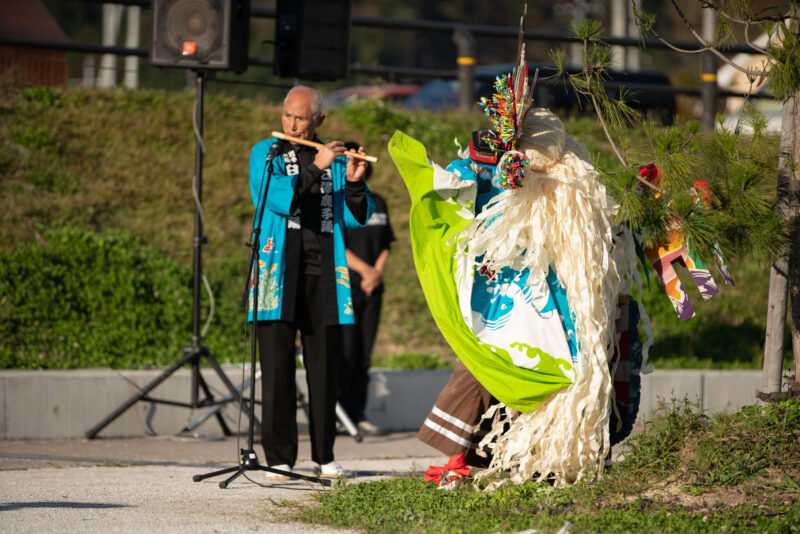
Day 3: Sunday, October 16
Enjoy Local Food, Culture and Crafts at Local Festivals!
Due to the Coronavirus pandemic, many festivals had to be canceled and the Otsuchi Sangyo Matsuri (Otsuchi Industrial Festival), which had celebrated its 22nd anniversary up to that point, was no exception. In 2021, it came back as the Otsuchi Marugoto Fukkatsu Matsuri (Otsuchi Whole Revival Festival), and this year, with vigorous safety measures for the coronavirus in place, the 24th Otsuchi Sangyo Matsuri was held. The festival is a full day packed with fun, local food and cultures, inviting you to “Eat! Watch! Enjoy!”
Umizukuri Memorial Park is at the port, where people arrived from early in the morning to enjoy over 30 booths selling all the good things to eat that fall in Otsuchi offers. This includes Otsuchi deer meat*, salmon, seaweed, persimmons, vegetables and Tohoku wine. There were also many local business and community organizations present, including a public bath nearby (which offered discount coupons) and social welfare organizations.
*Otsuchi Gibier: An initiative of Otsuchi Town to promote deer as game meat (gibier), a resource of the Town as opposed to considering them as nuisance animals. Under this Gibier Cycle initiative, the Town supports research and development for deer meat processing and products with the aim of transforming it into a cultural asset that they can proudly show to the world.
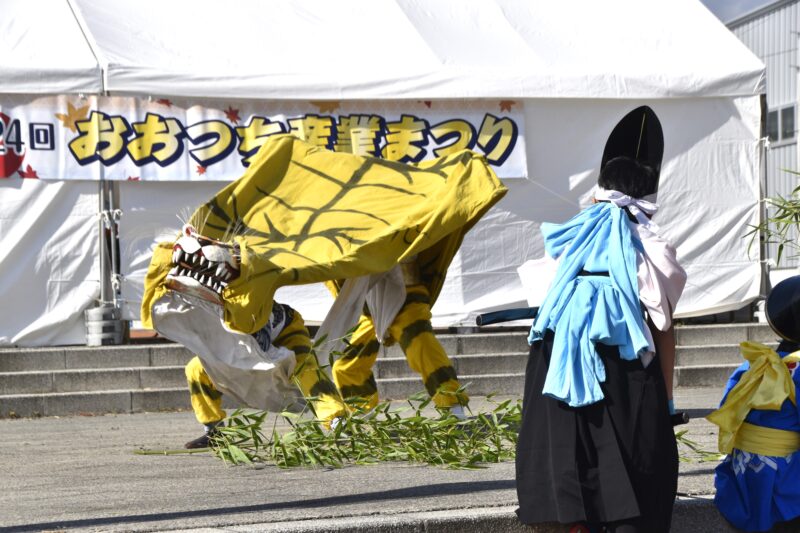
People flocked to the stage area as a variety of folk performing arts groups were about to begin their dance performances. The first to appear was Ando Toramai, with adults performing as tigers and children fighting them off. Under the blue sky, the image of the dancing yellow tiger was quite striking, and one could not help being drawn into its alluring power. The last image of the children conquering the tiger and giving a final speech was quite entertaining. The audience showed its support and applauded warmly for them. Ando Toramai was passed down to the people of Otsuchi in the 1830s, and everyone in the community has been contributing to the training of young performers. Despite the suffering from the Great East Japan Earthquake, Ando Toramai has come back together with their elaborate costumes and resumed their activities, in the hope of revitalizing the region by reinvigorating Toramai.
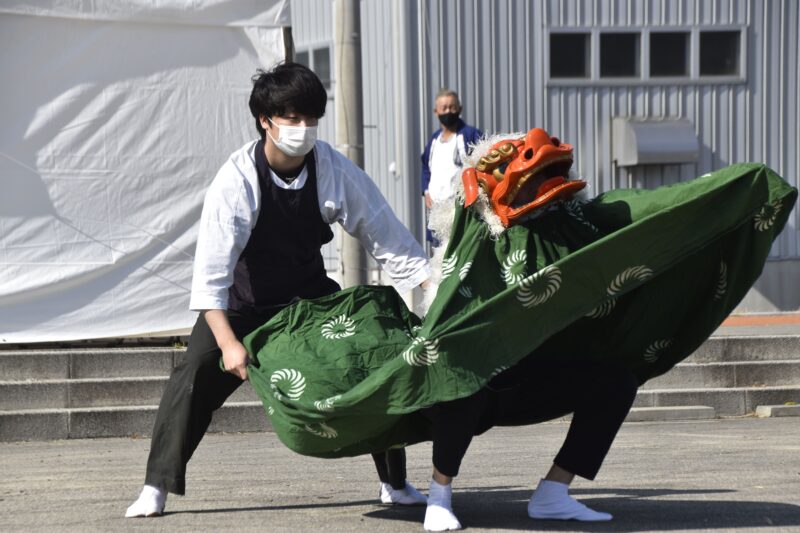
The next performing group, Namiita Daikagura, gave a dance of Shishi (lion) to the music of taiko drums and Tebiragane palm gongs. In this performance, a young girl rhythmically leads a big lion with a red head around the stage as if she were taming it. After the lion dance, the adults gave a dance performance, imbued with a peaceful atmosphere.
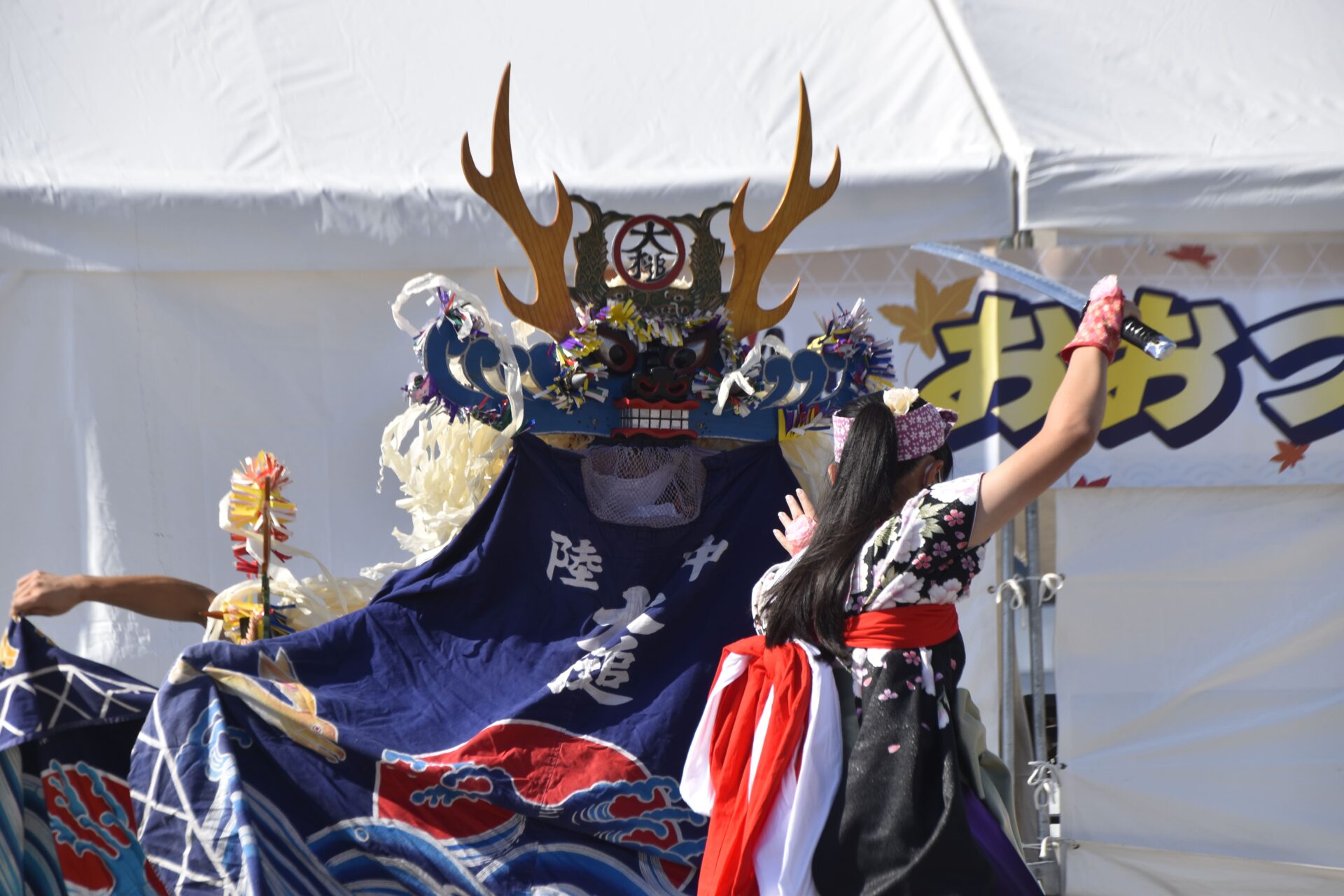
Kamiyo Shishiodori gave a performance portraying a herd of deer vigorously dancing and shaking their blue or red headpieces, decorated with flowers and other patterns vividly painted on them. Particularly powerful and beautiful was the scene of the deer being confronted by a group of girls with swords. In other scenes, the complexity of life was often felt: male deer fought each other over female deer, a winning male deer mated with a female deer, and so forth. It reminded us of the continuing cycles of life.
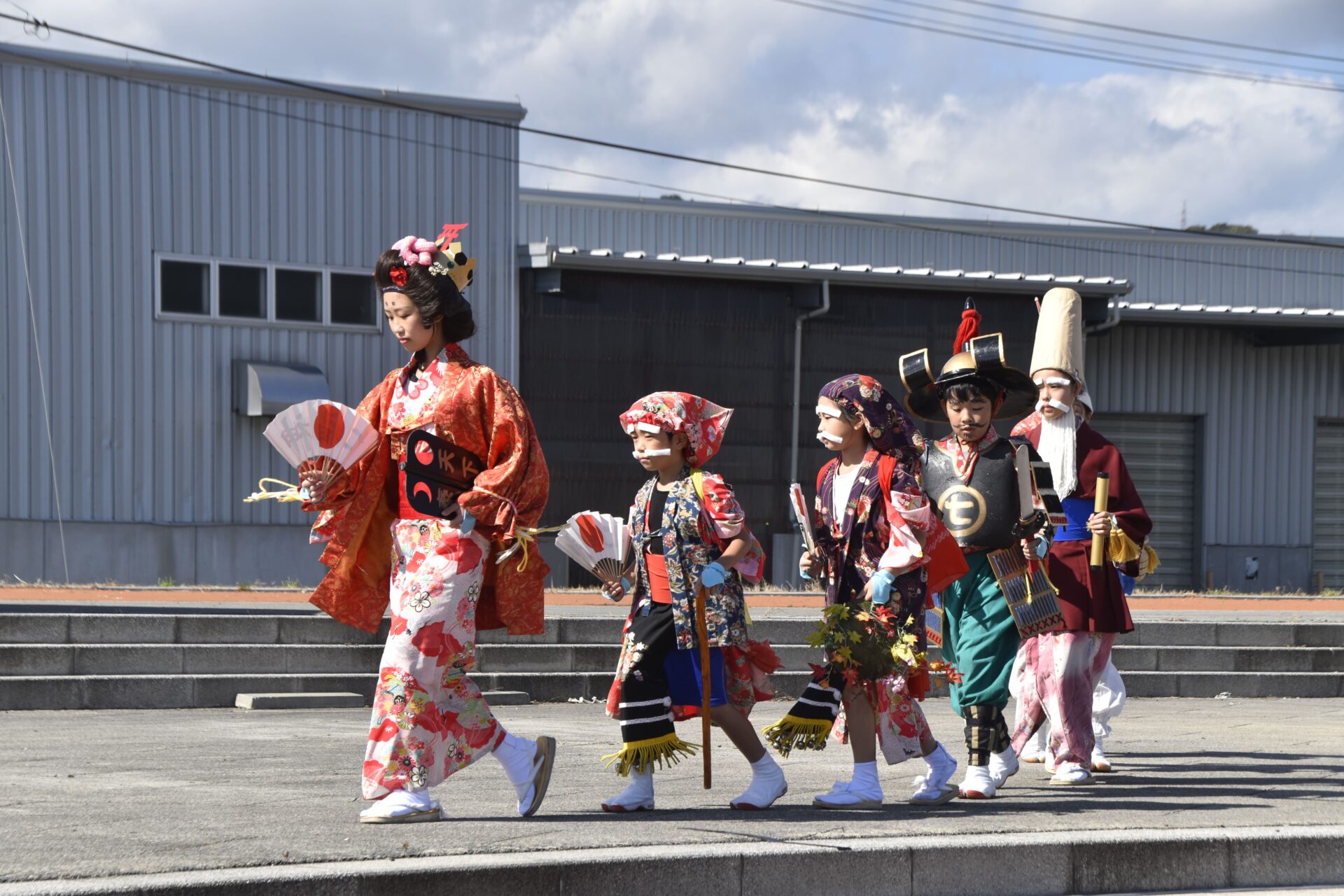
Ganmaido Shichifukujin is a fast-paced and light-hearted celebratory dance of Shichifukujin (Seven Lucky Gods) performed by children. Seven children took turns giving unique and distinguished performances one by one. It was obvious that this group had made a great effort to pass on the tradition to the younger generations.
Performance by performance, the festival showcased very impressive dances by folk performing arts groups. The audience responded enthusiastically; the crowd overflowed the stage area, and spread out to the Yatai booth area. With the sound of many different voices greeting each other, it was a day of enjoying Otsuchi fully, with all five senses.
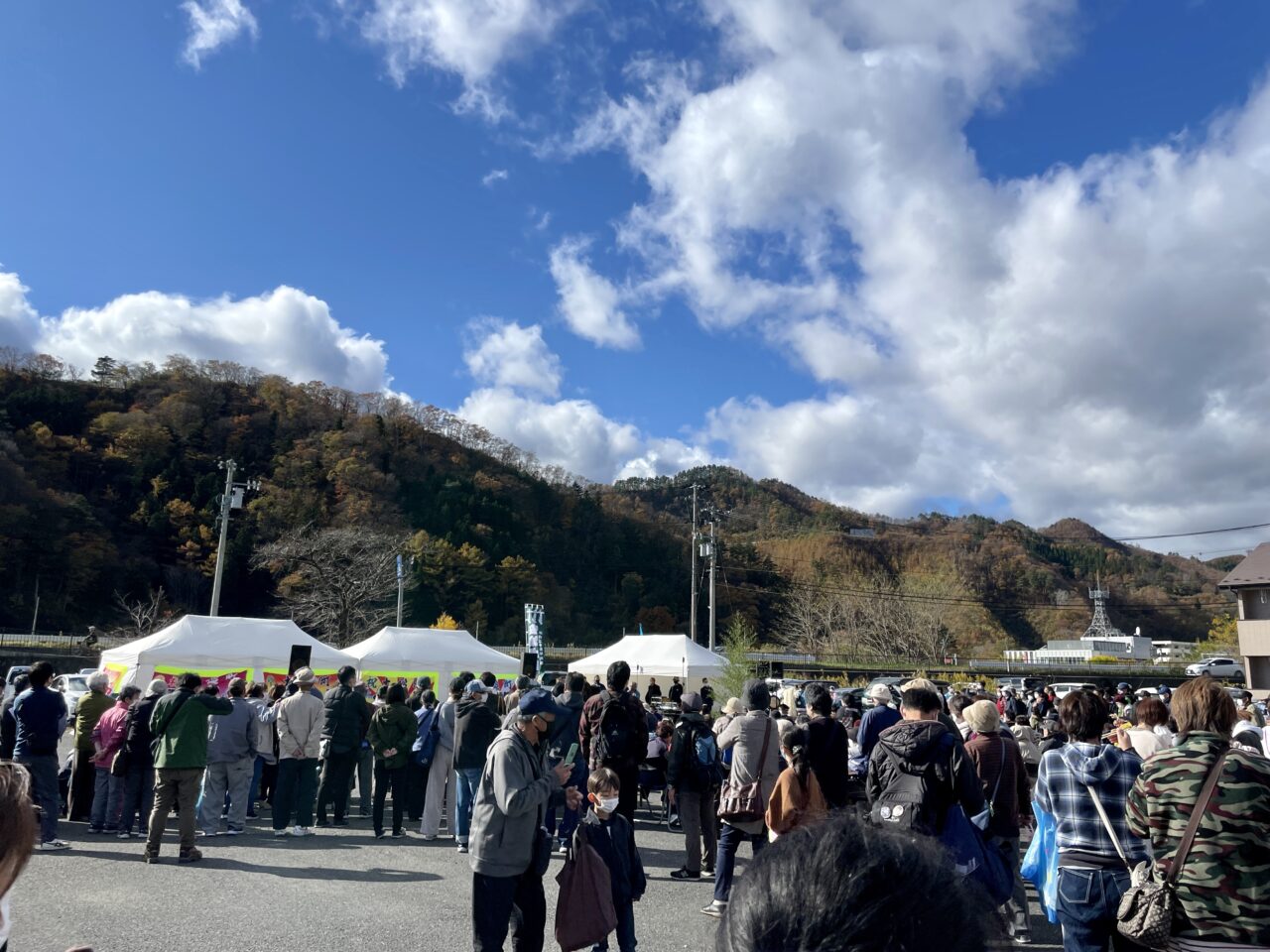
The 24th Otsuchi Sangyo Matsuri(Otsuchi Industrial Festival)
Date: Sunday, October 16, 2022, 9:00-15:00
Venue: Umizukuri Memorial Park (Otsushi Town, Iwate Prefecture)
This is an annual event hosted by the Otsuchi Town Chamber of Commerce. It returned during the coronavirus pandemic in 2021 at Umizukuri Memorial Park, which was constructed after the Great East Japan Earthquake. Otsuchi Town offers a variety of folk performing arts from Kagura and Daikagura to Shishiodori and Toramai. You can enjoy many different forms of folk performing arts just by visiting this town. In addition, the park was bustling with more than 30 booths, including a mobile zoo and food stands featuring the bounty of the mountains and the sea. Among the vendors was Otsuchi Gibier, which promotes deer meat as an important asset of Otsuchi through a campaign effort called Otsuchi Gibier Cycle. Iwate Otsuchi Salmon, a fish farming business of silver salmon and trout salmon that was established in 2022 also participated in the event. The Otsuchi Sangyo Matsuri is recognized as a significant event, next only to the Otsuchi Matsuri and Otsuchi Salmon Matsuri that are jointly organized every September by the Otsuchi Inari Shrine and Kozuchi Shrine.
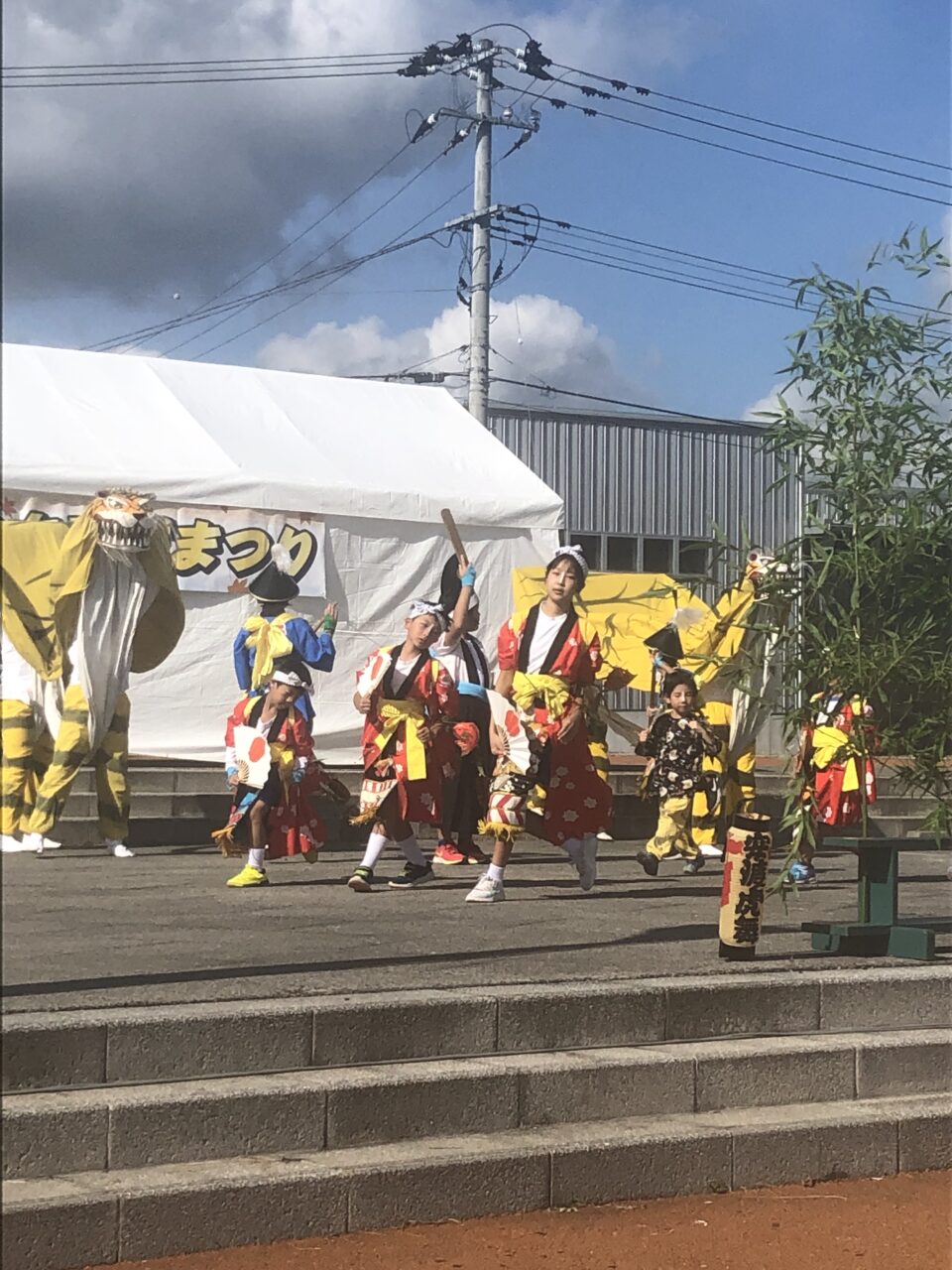
Comments from the Tour Reporter
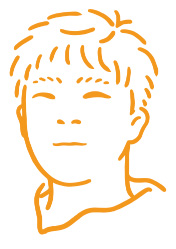
International student from China, currently studying at Iwate University
I visited Otsuchi for the first time in 2017. What I remember most vividly is the old Town Hall, which was left in a state of devastation by the Quake. There were no words describing the shock I felt when I watched some of the video recordings of the Quake’s aftermath. I also fondly remember visiting the Usuzawa Shishiodori Denshokan and learning about Japanese traditional cultures.
This trip was my first time visiting Otsuchi in five years. Revisiting Usuzawa Shishiodori Denshokan, I had an opportunity to try putting on the heavy Shishigashira headpiece and costume. The experience reminded me of the tremendous effort they make to preserve the tradition. I was surprised how beautifully Otsuchi has been revitalized. Sidewalks have been repaired and many shops are open for tourists. The smiles of the townspeople warmed my heart as I was assured that Otsuchi is gradually and steadily moving towards a full recovery. I highly encourage you to visit Otsuchi and discover how far they’ve come.
1 Trip to Encounter Rich and Colorful Folk Performing Arts 3 days / 2 nights Sep. 23 – 25 (Fri, holiday – Sun) Route: From Tokyo to Ichinoseki to Ofunato
2 Trip to Meet Young Practitioners of Folk Performing Arts 3 days / 2 nights Sep. 9 – 11 (Fri – Sun) Route: From Tokyo to Hachinohe to Hirono to Hachinohe to Tokyo
Edited by Sanriku International Arts Committee
Text by Kawano Momoko
Artwork by yamaneco graphics
Sanriku International Arts Festival 2022 REVIVE
– An FY 2022 Japan Cultural Expo Project Presented and Co-presented by Japan Arts Council and Agency for Cultural Affairs, Government of Japan
Organized by|Sanriku International Arts Committee, Japan Arts Council, and Agency for Cultural Affairs, Government of Japan
Co-organized by|Hachinohe City, Hashikami Town, Hirono Town, Kuji City, Noda Village, Fudai Village, Tanohata Village, Iwaizumi Town, Miyako City, Yamada Town, Otsuchi Town, Kamaishi City, Ofunato City, Rikuzentakata City, Sumita Town, Sanriku Railway Co., Ltd., Japan Folk Performing Arts Association, NPO Iwate Arts Support Center, and NPO Japan Contemporary Dance Network
Cooperated by|NPO Shinsai Regain, imajimu LLC, Tohoku Cultural Property Video Research Institute, Minna no Shirushi LLC